Jaw-dropping northern lights from massive solar flares amaze skywatchers around the world. 'We have a very rare event on our hands.' (photos)
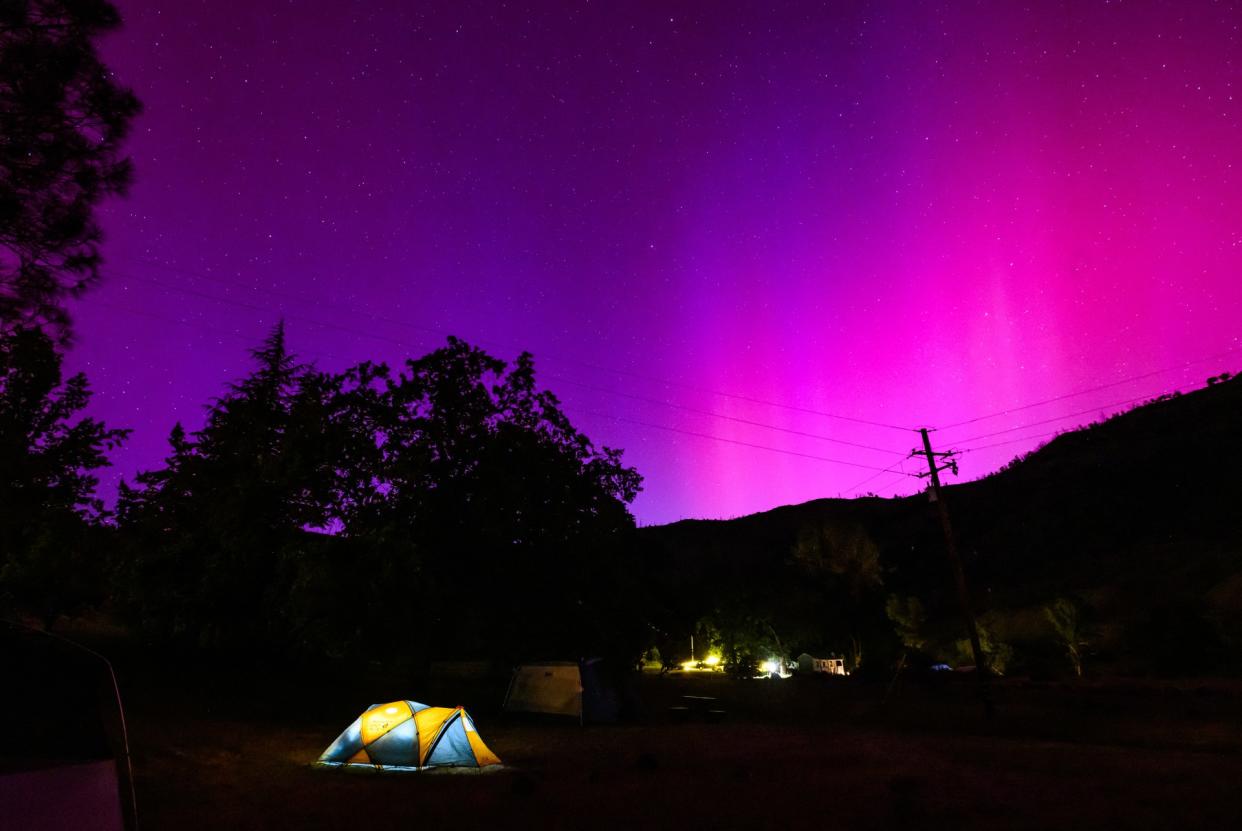
An aurora show like no other is playing out in the night sky this weekend as a historic northern lights display spawned by intense solar storms paints the sky in spectacular hues of pinks, purples and greens.
"We have a very rare event on our hand," Shawn Dahl, Service Coordinator of NOAA's Space Weather Prediction Group, told reporters on Friday (May 10) just hours before the northern lights spectacle began.
In the United States, the northern lights (or aurora borealis) — typically only visible around the Arctic region and northern Canada — were expected to be visible as far south as at least Alabama or Northern California — with NOAA officials reporting sightings from locations even farther south. Space.com Editor Brett Tingley witnessed dazzling event from South Carolina, a surprise light show for a local music festival.
"Auroras surprised us in Greer, S.C. on Friday during the Albino Skunk Music Festival," Tingley told Space.com. "They were highly animated and appeared in shades of reds and greens. A true delight for skywatchers at mid latitudes who rarely get to witness the phenomenon for ourselves."
Related: 4 large solar bursts could supercharge the auroras this weekend
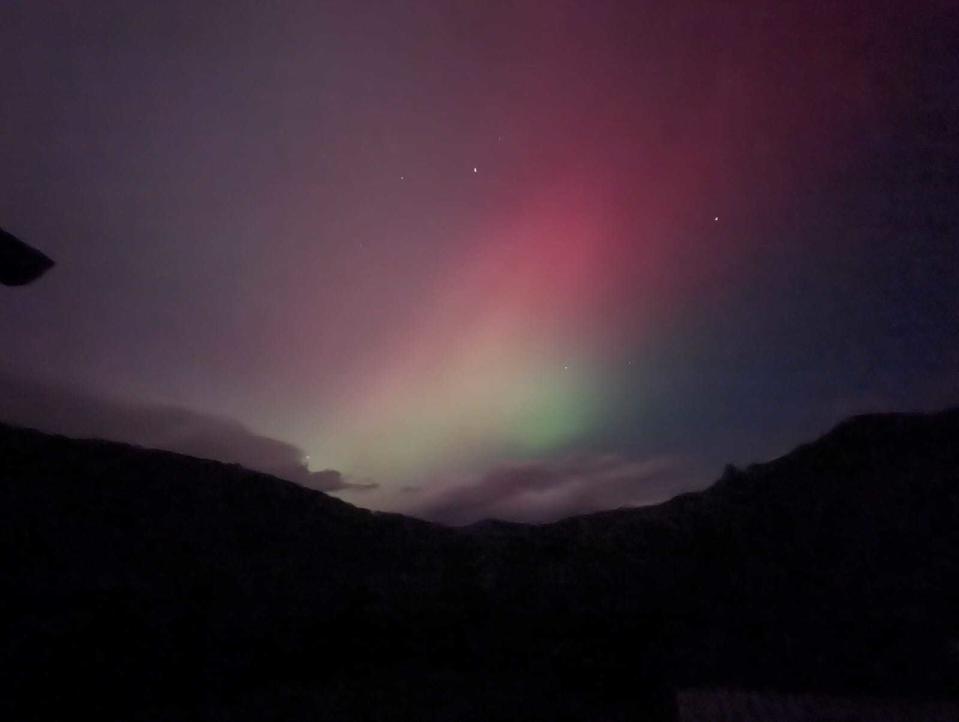
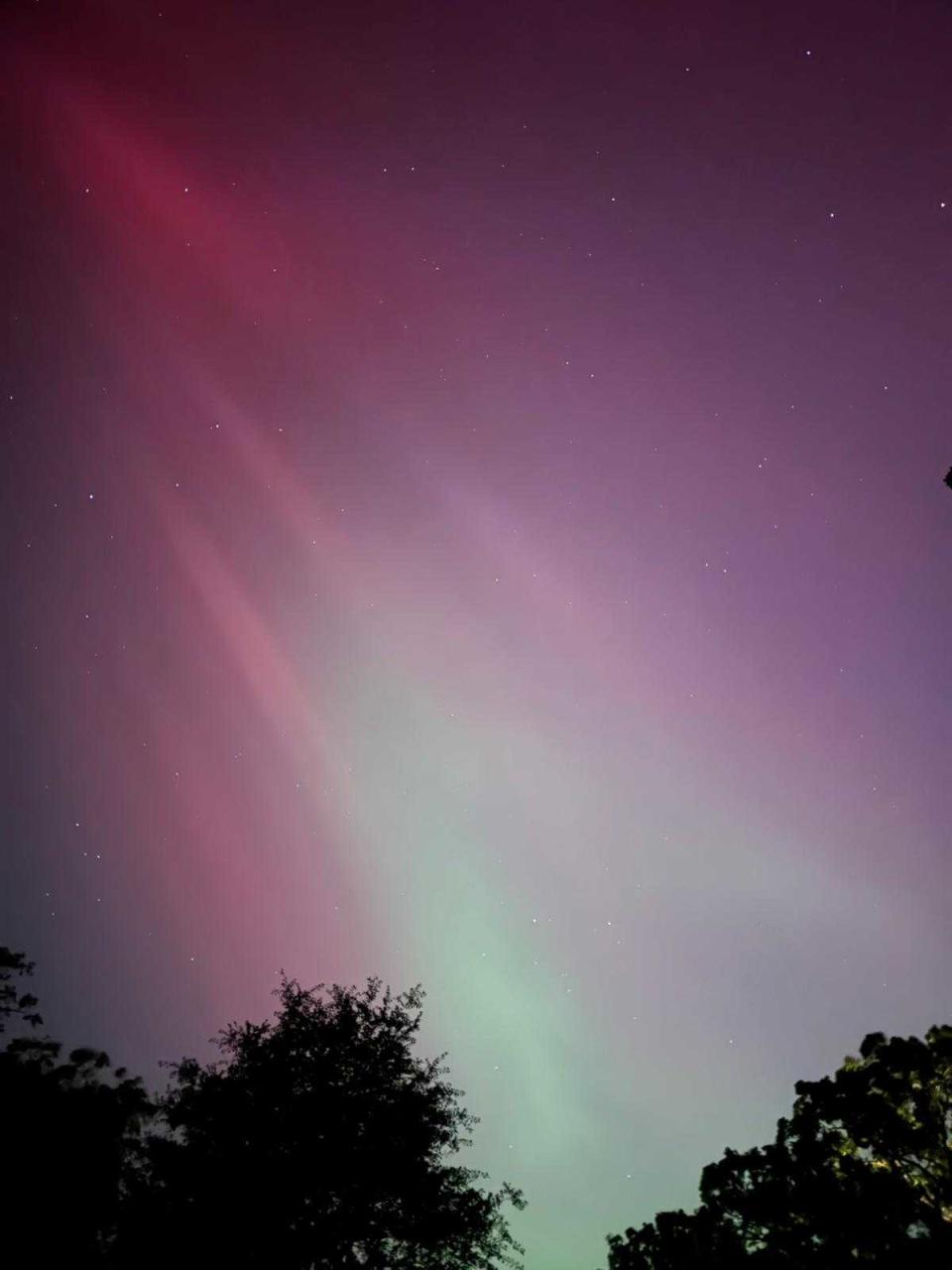
In Middleton, California, north of San Francisco, AFP and Getty photographer Josh Edelson captured stunning views of pink and purple auroras over campers in tents and houses, while in Vienna, Austria, photojournalist Max Slovenick captured a haunting view of a pink aurora wave over the city for AFP, APA and Getty.
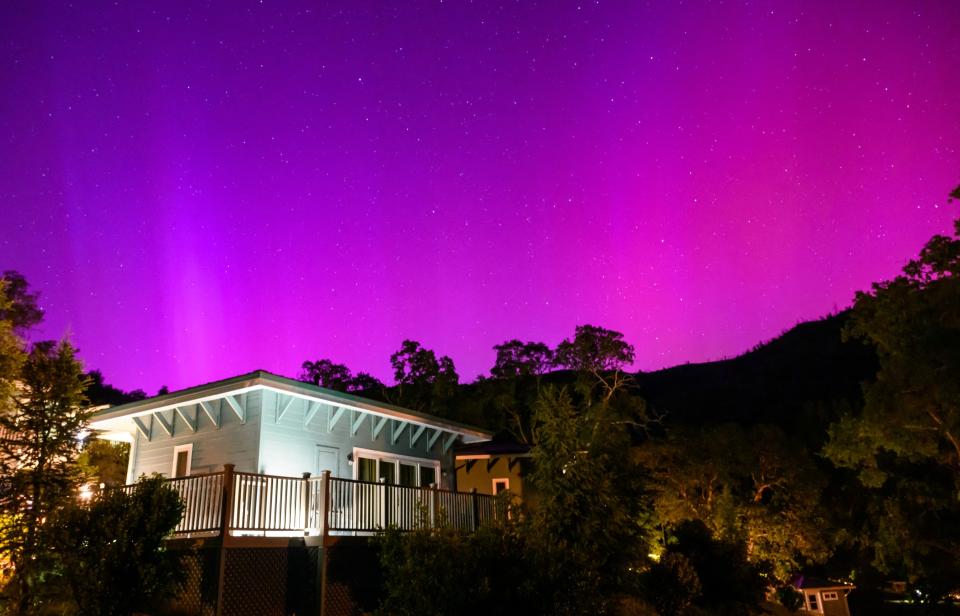
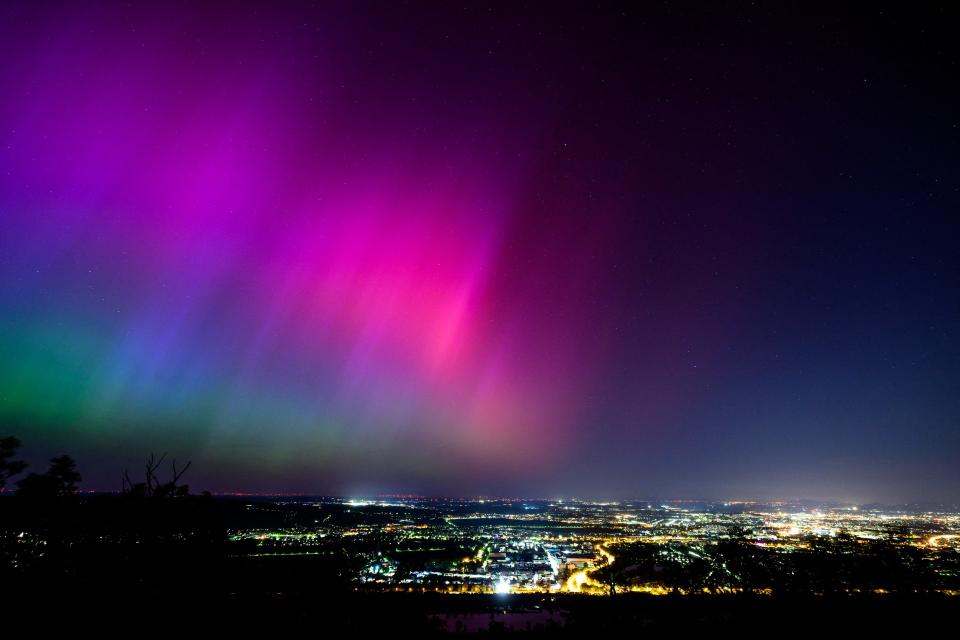
NOAA officials said that even if you cannot see the northern lights with your unaided eyes, the night sky settings of many cell phones may be able to pick them up.
"Cell phones are much better than our eyes at capturing light," Brent Gordon, Chief of Space Weather Services Branch for SWPC, told reporters Friday. "Just go out your back door and take a picture with the newer cellphone and you'd be amazed at what is what you see in that picture versus what you see with your eyes."
Our guide on how to photograph the northern lights has everything you need to capture the aurora display, and our best equipment for aurora photography list can help you find the best gear. You can also check out our guides on how to see the northern lights. We even have a guide on how to edit aurora photos once you have your images.
Related: Photographing the northern lights with the Sony A7R V

Sony A7III was $1799.99, now $1498
Sony’s third incarnation of the game-changing Sony A7 camera, the Sony A7III is lightweight yet packs a punch. With 4K HDR video, this camera is often used to capture videos of the Northern Lights. Right now, you can find it on sale for 17% off at Amazon. Check out our Sony A7III review.
Unprecedented solar storms
The intense auroras were spawned by a series of massive solar flares and coronal mass ejections that erupted from the sun earlier this week, flinging wave after wave of charged solar particles toward Earth. Those particles slammed into Earth's magnetic field Friday, triggering what space weather scientists called a level G5 geomagnetic storm — something Earth has not seen since the truly epic solar storms of Halloween 2003.
"The reason for all this, well, there's been two sunspot clusters, one in the northern hemisphere of the sun, one in the southern hemisphere of the sun," Dahl said Friday. Those sunspot groups, one of which is now 17 times the width of Earth, have been unleashing the strongest solar flares since at least 2017 this week. In fact, the sun fired off another massive X5.8 solar flare overnight on Friday, NOAA SWPC officials said. X-class solar flares are the most powerful type of eruption from the sun.
The sun is currently in an extremely active phase of its 11-year solar cycle, and is amid a peak period known as solar maximum in which solar flares and explosive coronal mass ejections can be more frequent.
Related: The worst solar storms in history
Such massive solar flares can trigger radio blackouts and interfere with power systems on Earth, as well as pose a radiation risk to satellites and astronauts in orbit, NOAA officials said, adding that NASA was tracking the event to determine if astronauts would have to take shelter deeper inside the International Space Station. As of early Saturday (May 11), NASA officials had not reported any need for such measures.
"Because the space station is in low Earth orbit, they do receive protection from our magnetosphere, although they're high enough up there, there are some areas that are vulnerable," SWPC space scientist Rob Steenburgh told reporters Friday. "We communicate with NASA daily, at least once a day and during events like this multiple times a day to keep them apprised of the evolving space weather situation."
Related: Where and when to see the northern lights in 2024
Northern lights dazzle down to Florida
With such an intense geomagnetic storm, auroras were visible from areas that normally don't see the northern lights.
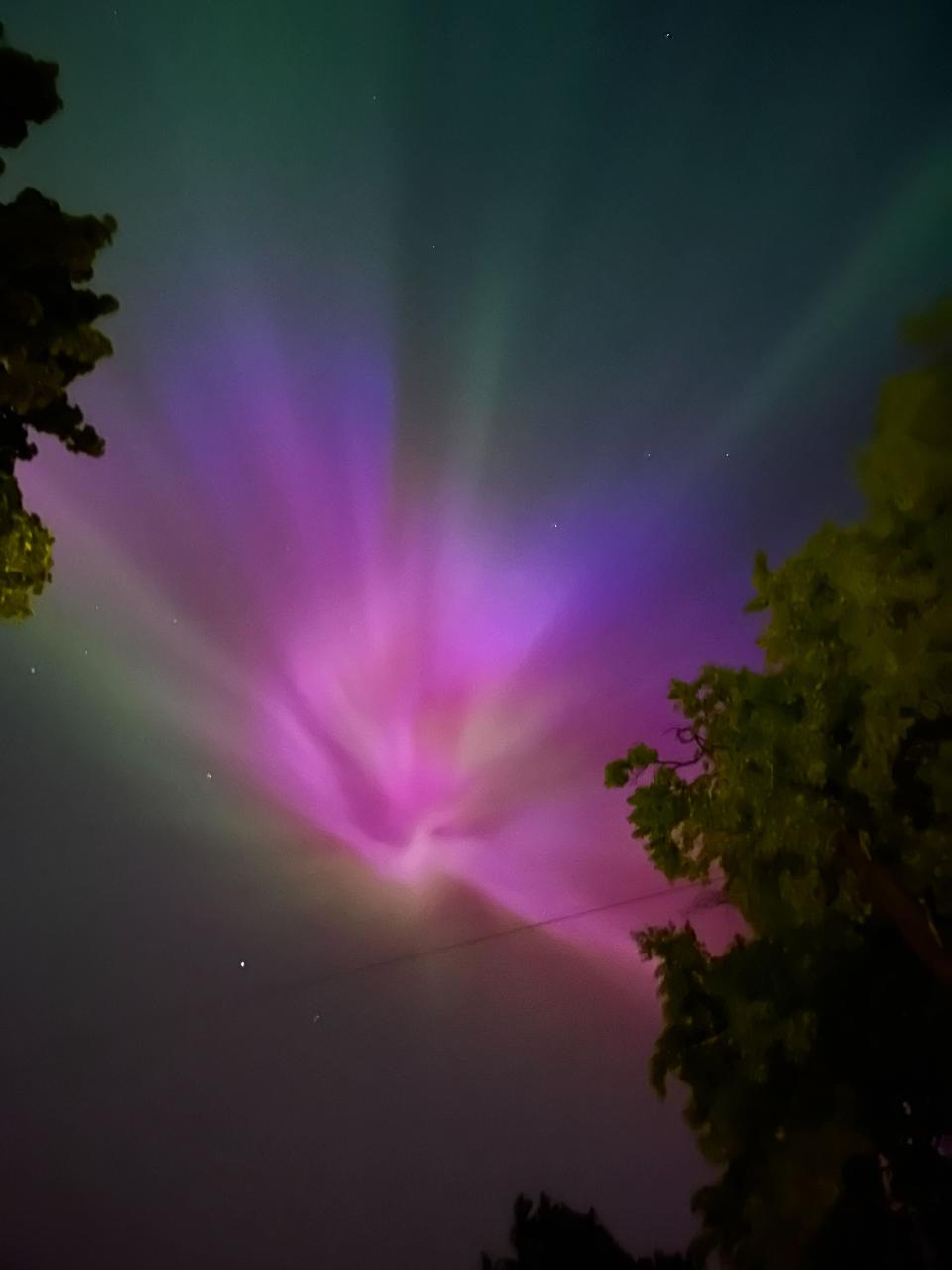
"I may write about them a lot but I never once imagined I’d get a northern lights show of this magnitude above my hometown, Nottingham, U.K.," Space.com Reference Editor Daisy Dobrijevic said Friday night. "I've been fortunate to see many northern lights displays but I always say each one is like the first time because they're all different! This was certainly that!"
Related: Northern lights webcams: Watch the aurora borealis online for free
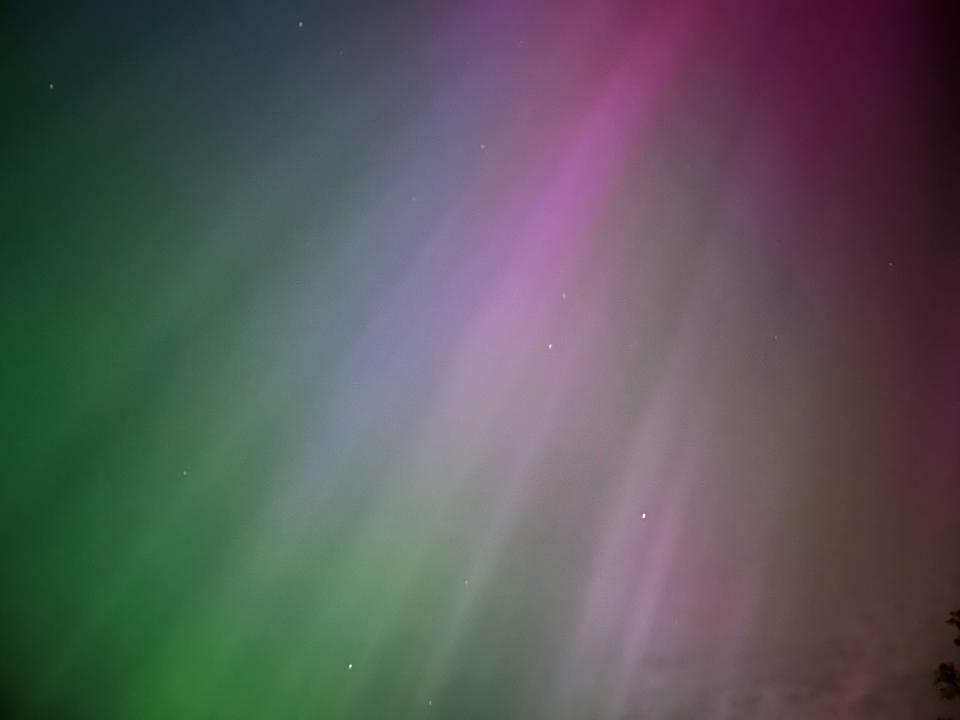
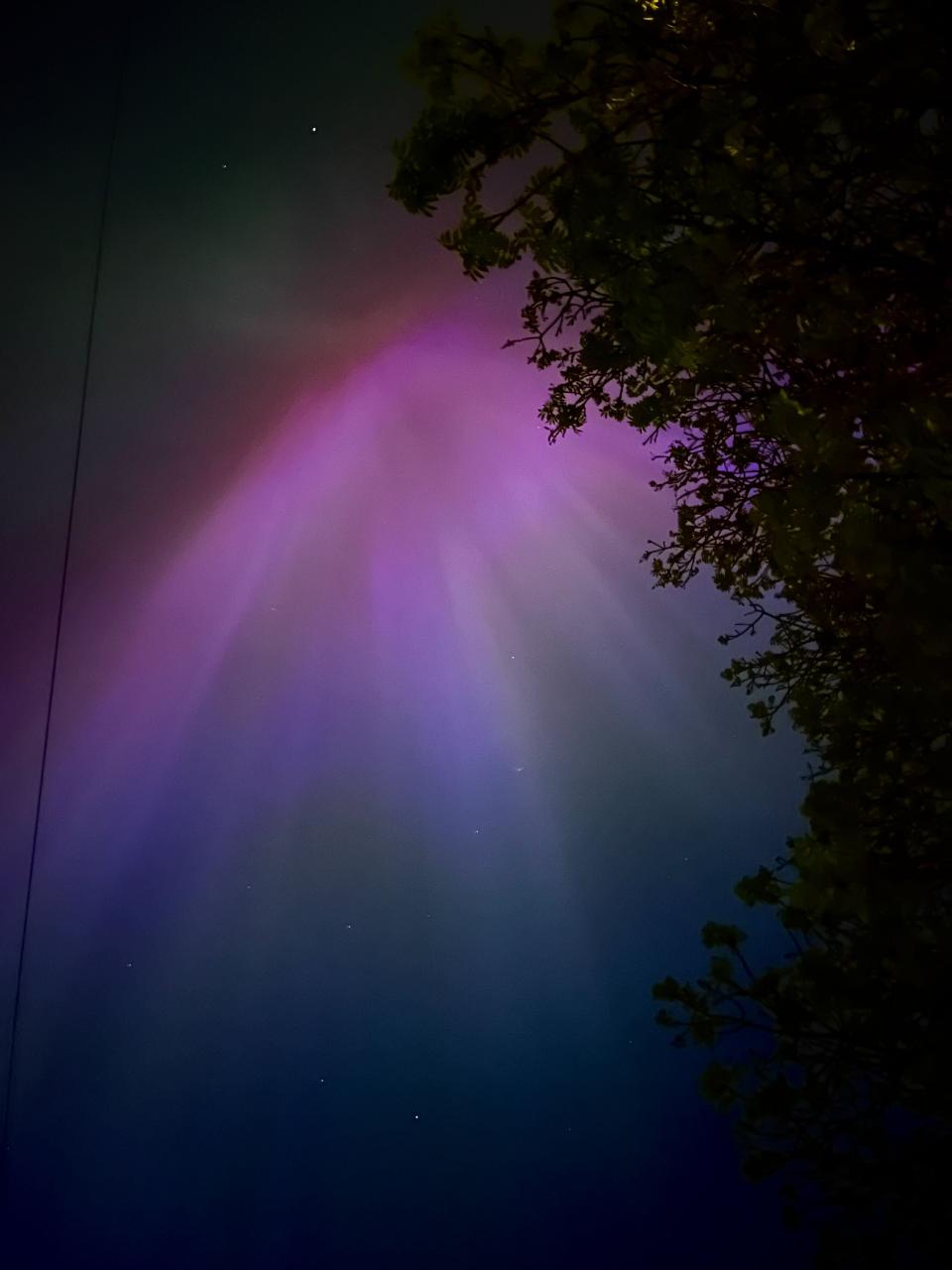
Dobrijevic has observed the northern lights from Sweden in the far north, but Friday night's aurora show in her own backyard was something else entirely.
"I've never seen so many vivid colors dancing across the sky," Dobrijevic said. "What a tremendous treat indeed."
Astronomer and avid aurora chaser Tom Kerss managed to capture the northern lights as far south as Florida.
"Never in my life did I imagine I’d capture this! In all my years of aurora-chasing this seemed like the last place I’d ever witness it. The Northern Lights in Florida!" Kerss wrote in a post on X.
We had these wonderful images sent in from Kaitlin Moore who saw the northern lights from Madison, Wisconsin.
"Wisconsin has fared well during this period of solar maximum; most of the state was able to glimpse the aurora borealis both in April of 2023 and this past evening in May 2024, following a pair of uncommonly powerful coronal mass ejections," Moore told Space.com in an email.
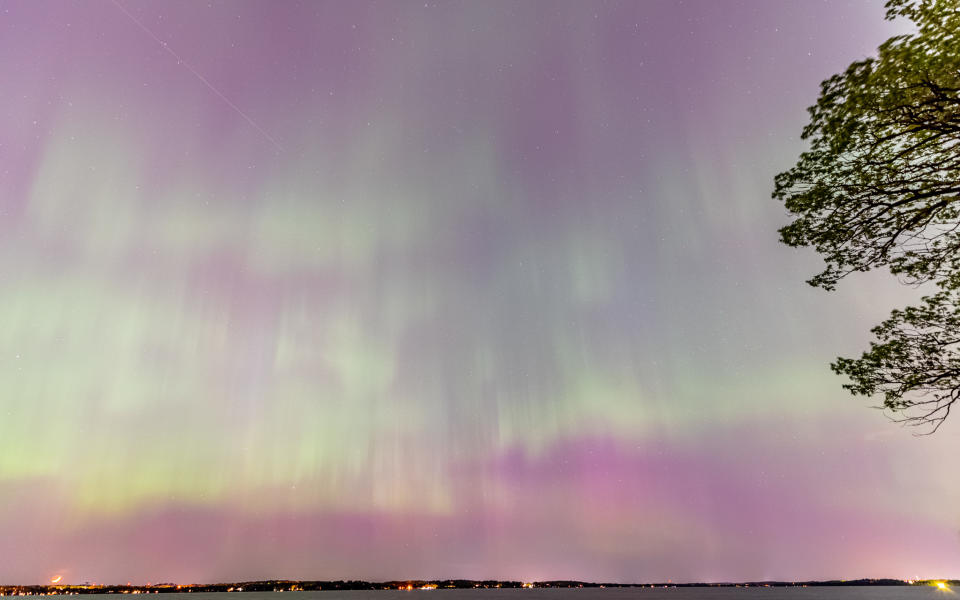
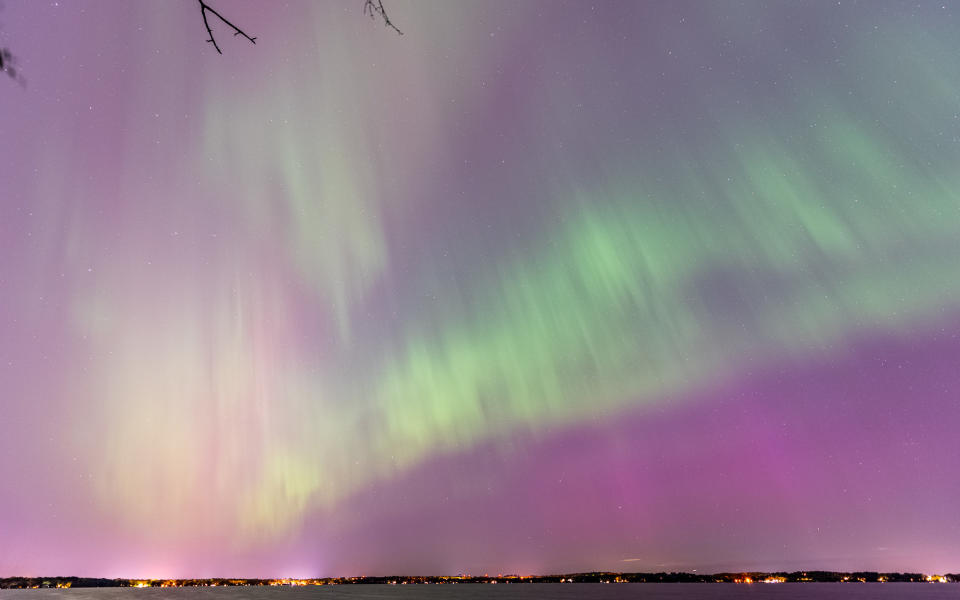
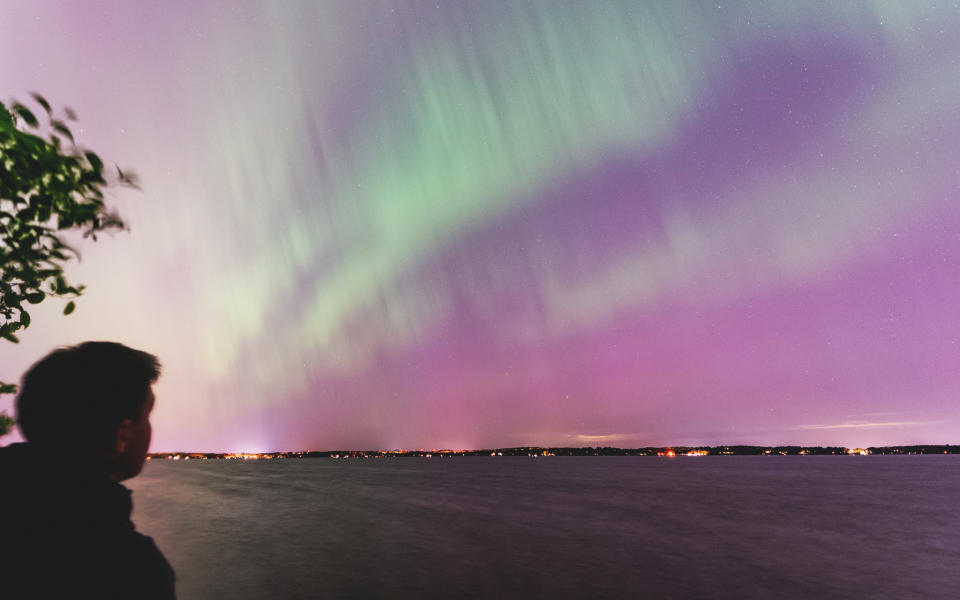
"Tonight, the possibility of glimpsing the world-wide aurora was thrown into question due to a few hours of thunderstorms soon after sundown. But the weather system was fast-moving, and by midnight the skies were completely clear!" Moore continued.
Even the city's light pollution couldn't deter the incredible light show.
"Even in a light-polluted city, surrounded by interstates and a regional airport, the auroral activity was so strong that gossamer veils of atomic oxygen and nitrogen, the luminescent greens and pinks, were visible even with the naked eye," Moore continued.
"Stargazers over Lake Mendota watched the crescent moon set over Madison and even glimpsed a small meteor blazing briefly against the glow of ionized gases," Moore said.
The southern lights get supercharged, too
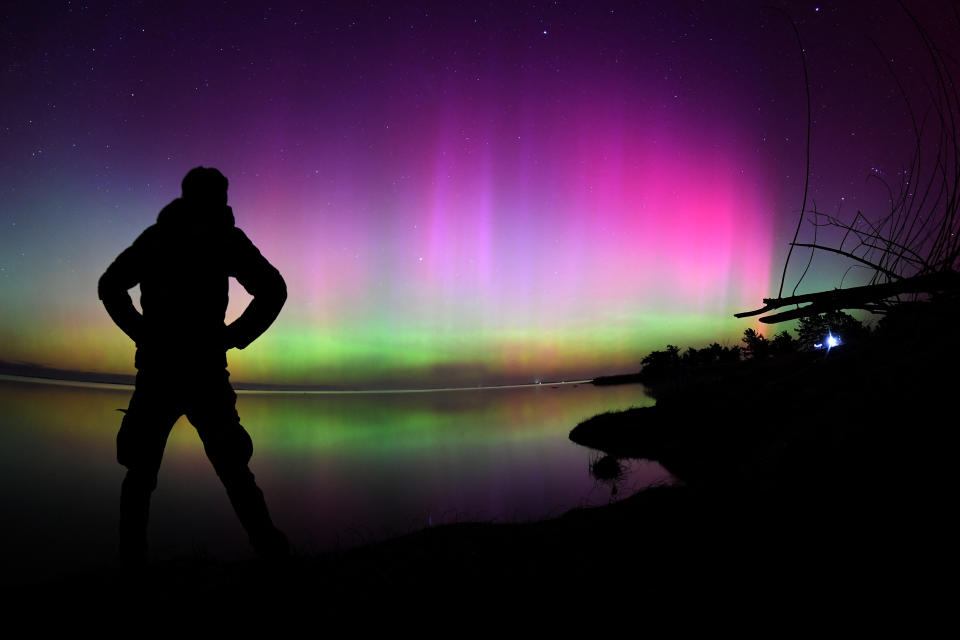
The Northern Hemisphere of Earth isn't the only one getting supercharged auroras. The southern lights (or aurora australis) were also visible for closer to the equator than their usual Antarctic locales, NOAA officials said. The result was an absolutely spectacular show for those down under!
At Lake Ellesmere, outside of Christchurch, New Zealand, AFP photographer Sanka Vidanagama captured absolutely amazing views of auroras ranging from pink and purple to truly jaw-dropping reds and oranges.
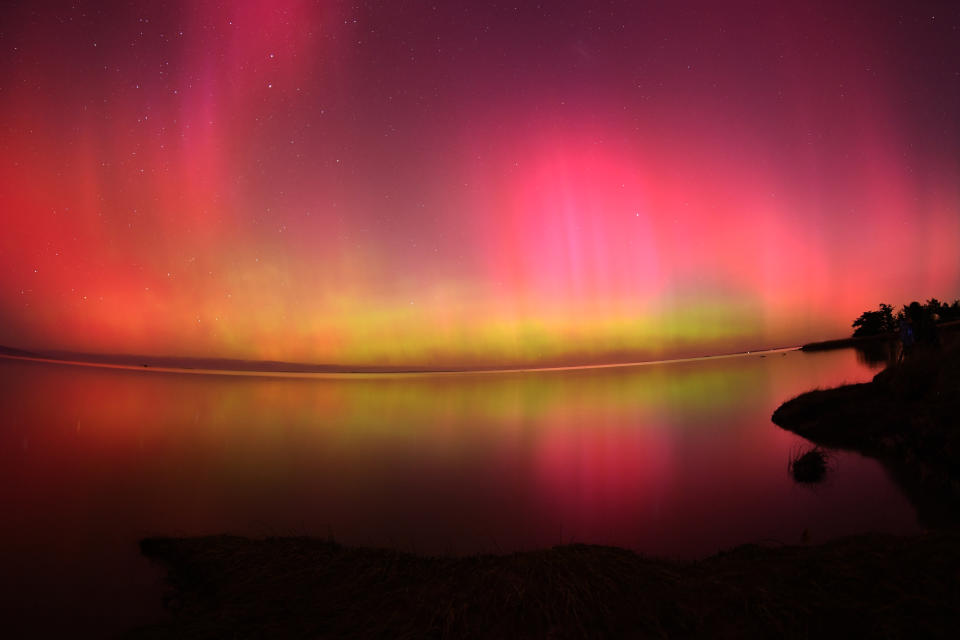
"Absolutely biblical skies in Tasmania at 4am this morning." Photographer Sean O' Riordan wrote in a post on X.
"I'm leaving today and knew I could not pass up this opportunity for such a large solar storm. Here's the image. I actually had to de-saturate the colours."
RELATED STORIES:
— Behemoth sunspot AR3664 unleashes its biggest solar flare yet
— Sun explodes in a flurry of powerful solar flares from hyperactive sunspots (video)
— Wild solar weather is causing satellites to fall. It's going to get worse.
NOAA officials said the impact of this week's solar flares should amplify the northern lights throughout the weekend, so even if bad weather spoiled your view on Friday night (it was raining in New Jersey for Space.com Editor-in-Chief Tariq Malik, for example) you do have more chances. NOAA SWPC officials said the impact of the solar storms could continue through the weekend and well into next week as more solar eruptions occur.
"Nobody should think that the storm is over just because conditions quiet down for a little bit," Dahl said. "It could turn around and be very quick to develop once again."
Editor's note: If you capture a stunning photo or video of the northern lights (or southern lights!) and want to share them with Space.com for a possible story, send images, comments on the view and your location, as well as use permissions to spacephotos@space.com.
Space.com Editor-in-Chief Tariq Malik contributed to this story from West Orange, New Jersey. Reference Editor Daisy Dobrijevic contributed to this story from Manchester, U.K.

